This course follows the Nakasendo road from JR Kashiwabara Station, walking through three post towns: Kashiwabara-juku, Imasu-juku, and Sekigahara-juku. The Nakasendo route between these three post towns was the Tozando Road before the Edo period (1603-1867). This route is highly recommended for those who love history, as it is full of historical sites from various periods, spanning the Jinshin Rebellion, the Genpei War, and the Battle of Sekigahara.
This route is a little over 8 km long. There are no steep ascents or descents, so 4 to 5 hours will be enough time for a slow walk.
Course Highlights
Exit JR Kashiwabara Station and head east along the well-maintained Nakasendo Road. The center of the Nakasendo lodging town of Kashiwabara-juku is west of the station, so if you have time, it is a good idea to take a stroll.
A short walk takes you to the Terutehime Kasagake Jizo, the legend of Terutehime, who appears in Kabuki plays such as Oguri Hanganmono.
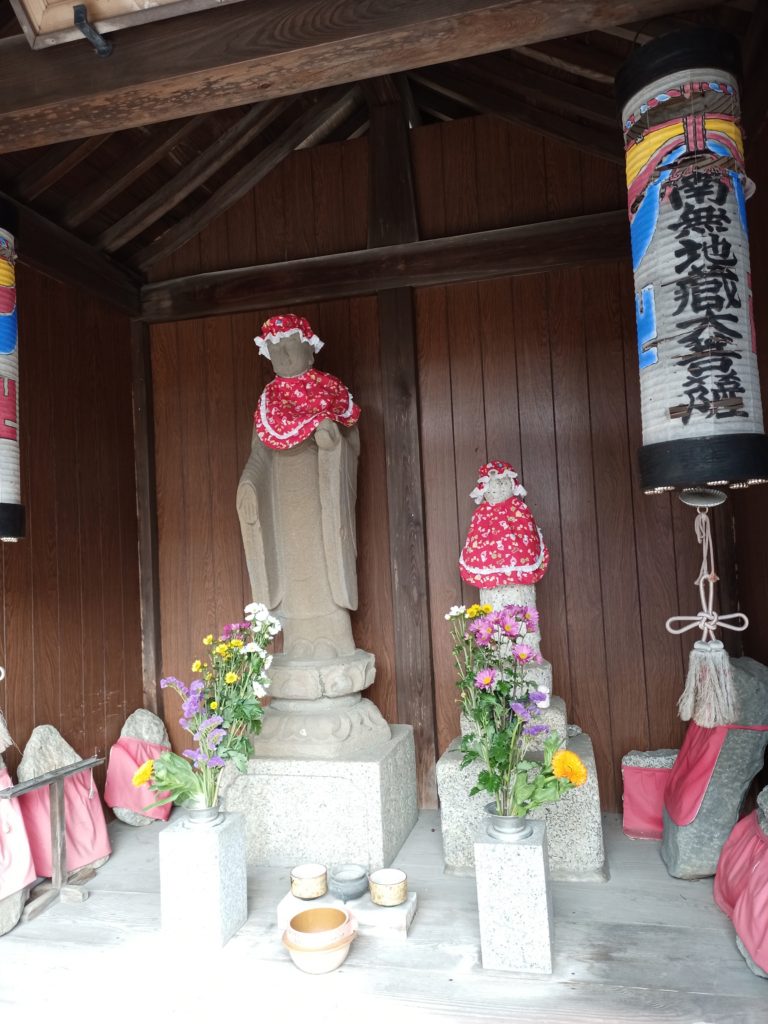
After crossing the JR Tokaido Main Line railroad crossing, you will see the torii gate of Shinmei-jinja Shrine on the north side. This is the trailhead for Mt. Nose, where the ruins of Takekurabe castle is located. The round trip takes about two hours, so if you are fit, go ahead.
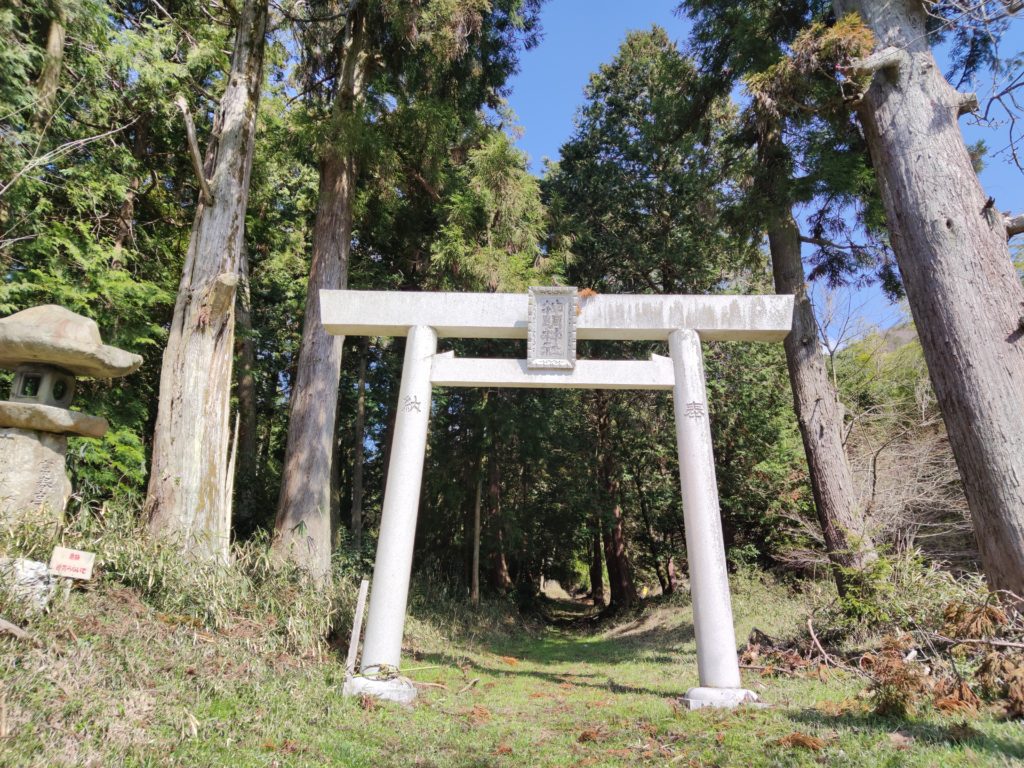
Eventually, on the border of Shiga and Gifu (Omi and Mino) prefectures is the village of Nemagatari. According to the commentary, there are various legends here. One of them is that of Tokiwa Gozen, who chased after Minamoto no Yoshitomo after the Heiji Disturbance in 1159, and “at nightfall, she recognized her retainer Eda Yukiyoshi from a conversation at a neighboring inn, and was delighted at the coincidence”. Another story features Shizuka Gozen, who “came in pursuit of Minamoto no Yoshitsune and met Eda Genzo”.
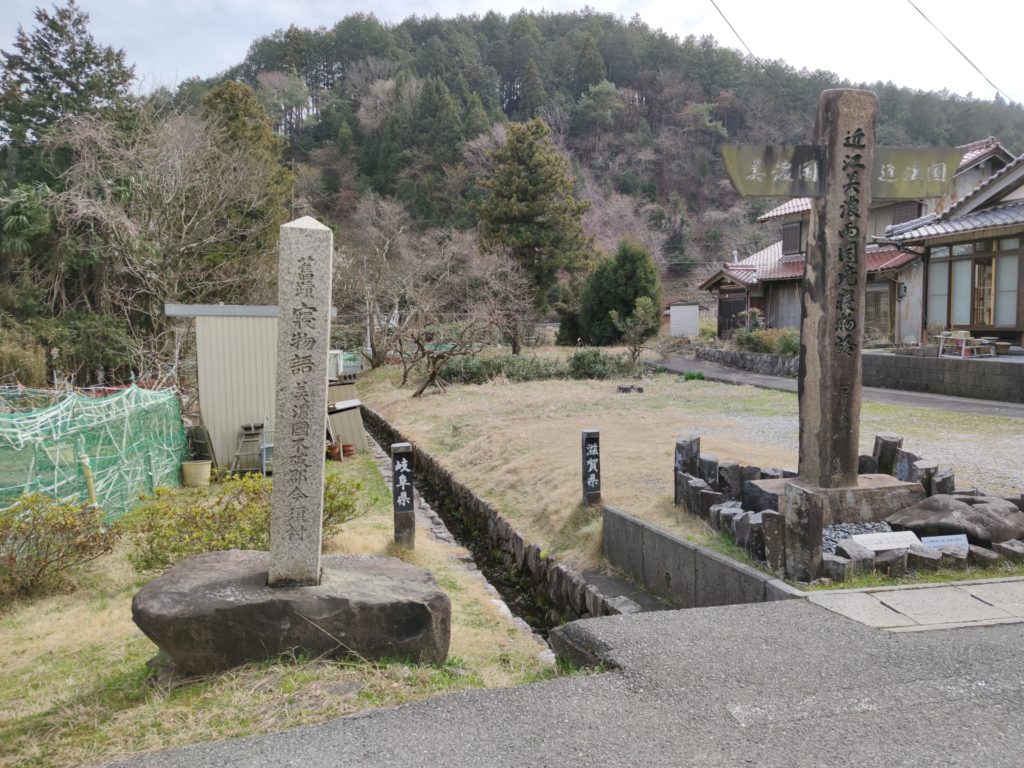
Next is Matsuo Basho’s haiku monument, “New Year’s Day, Mino and Omi and Leap Moon”. It seems that Basho passed through here in his Nozarashi Kiko and Oku no Hosomichi, but this haiku is apparently from another time.
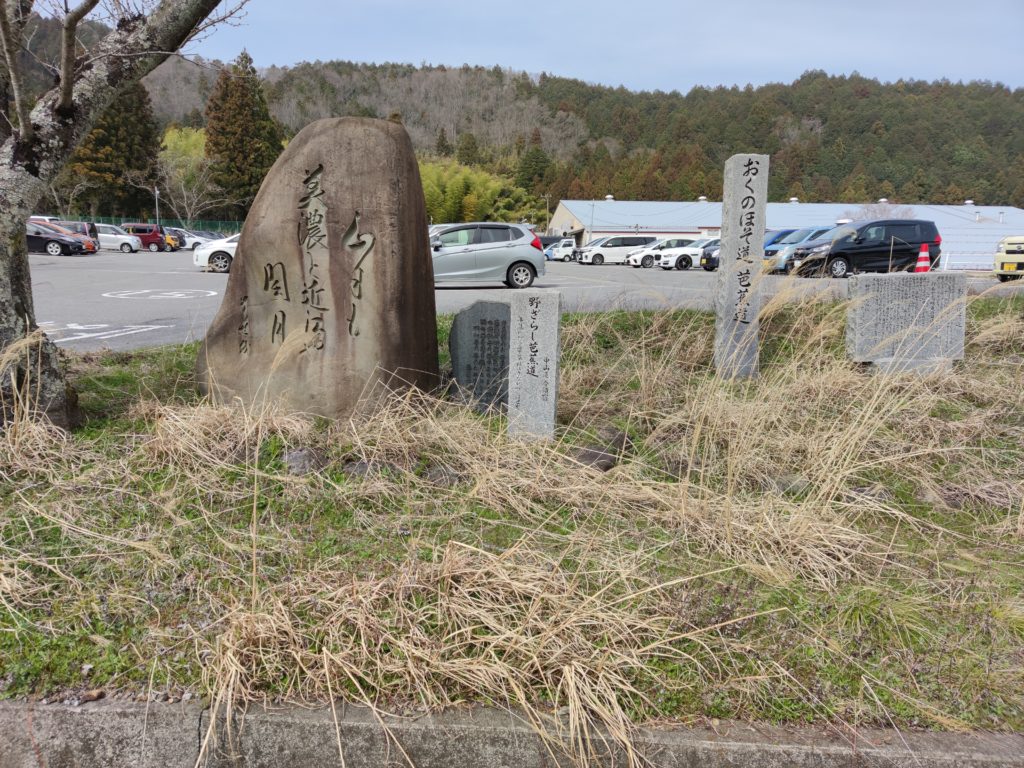
Eventually, after crossing the national highway, you will come to the hill of Kuruma-gaeshi (turning car) in the middle of Imasu-juku. This may be the story of the Tozando Road period during the Heian period.
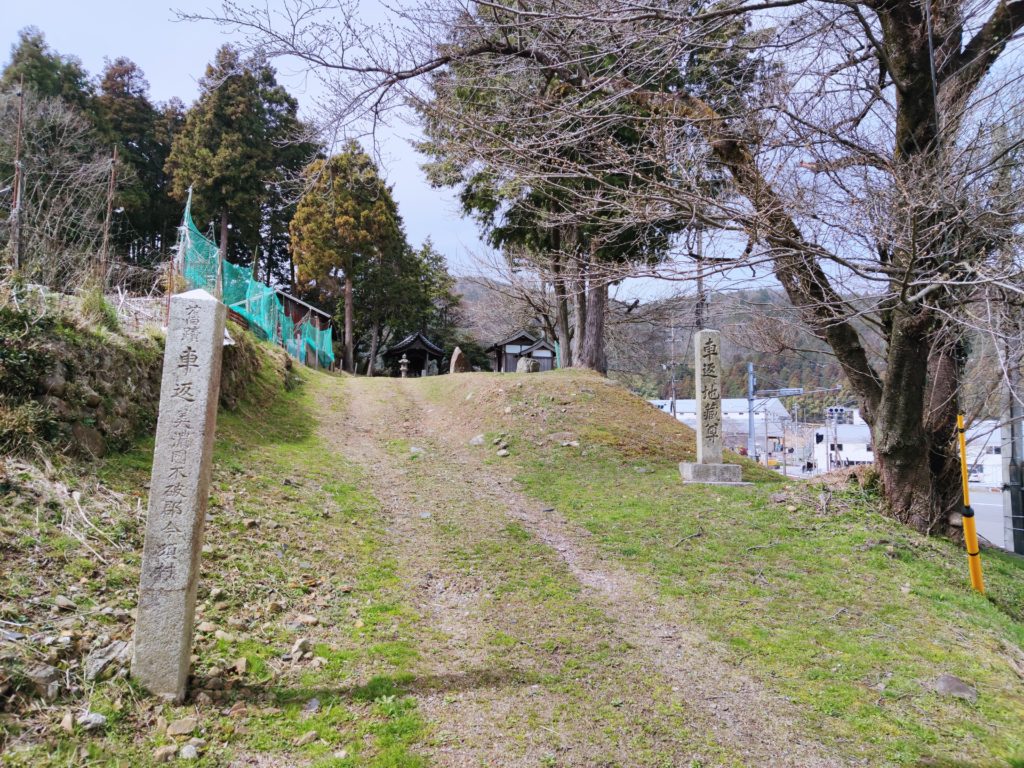
There are no old buildings left in Imasu-juku, but the atmosphere remains.
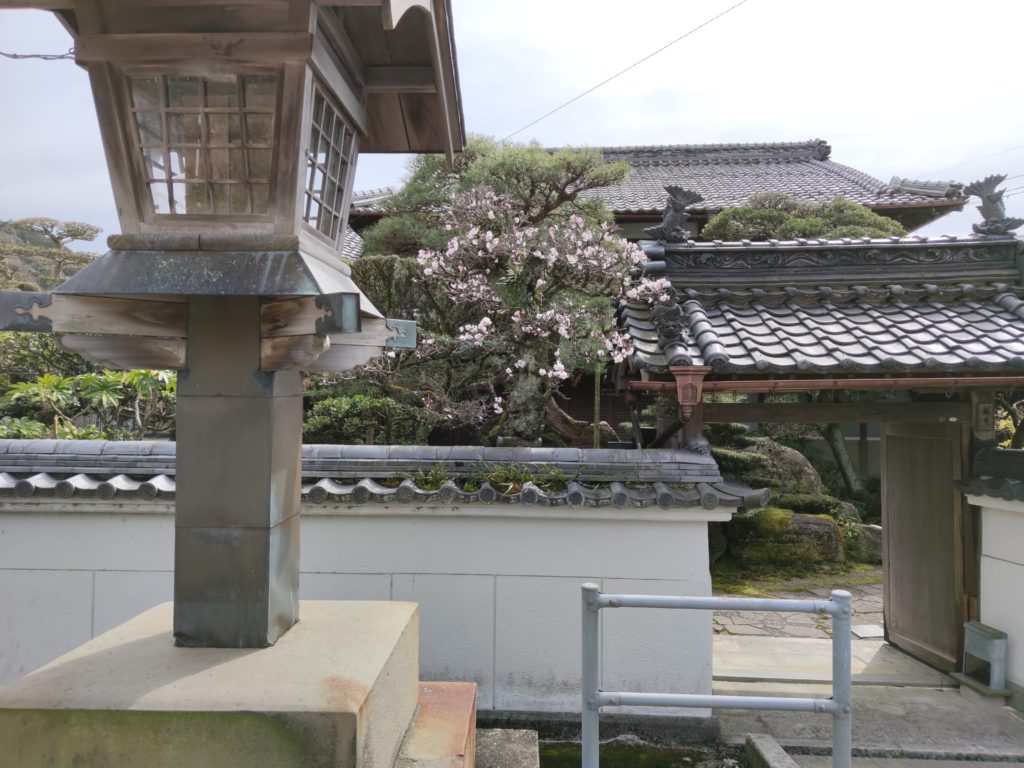
The stone on which Tokugawa Ieyasu sat remains at Myooji Temple.
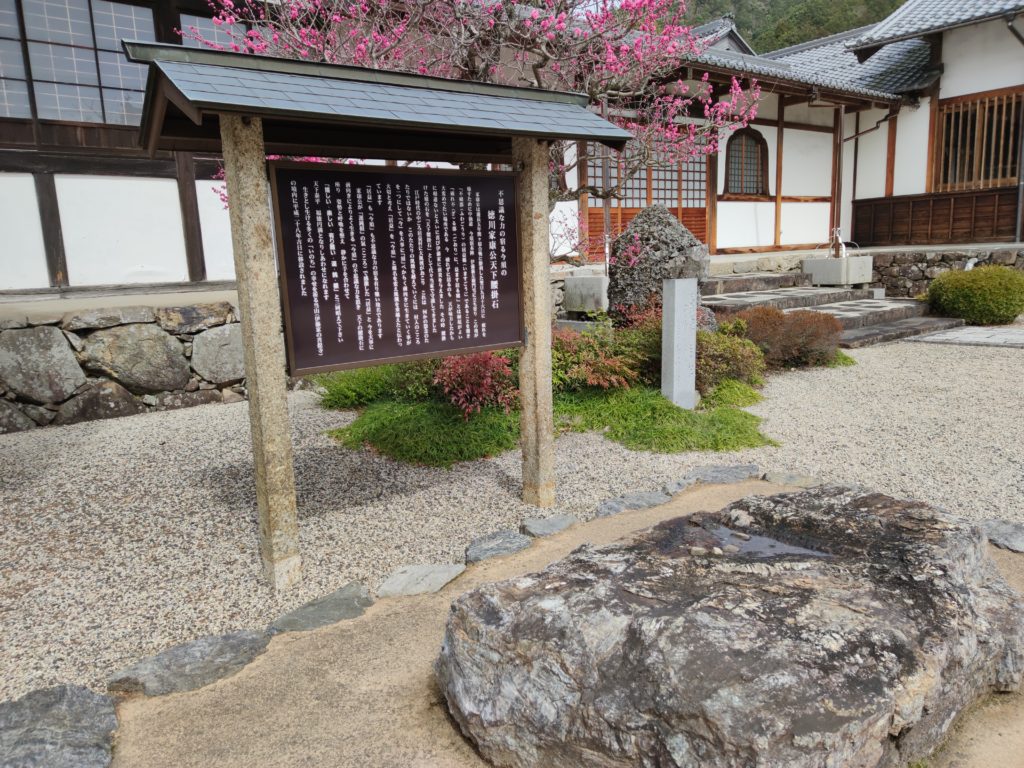
Behind Myooji Temple is a cemetery, where there is a grave believed to belong to Sekigahara Yoichi (Fujiwara Motokiyo), who served as a waterman in Sekigahara during the Heian period (794-1185). This gravestone was found in the ground during the construction of a railroad in the Meiji era (1868-1912), so it has not been here for a long time, and there is no evidence that it is the tomb of Sekigahara Yoichi.
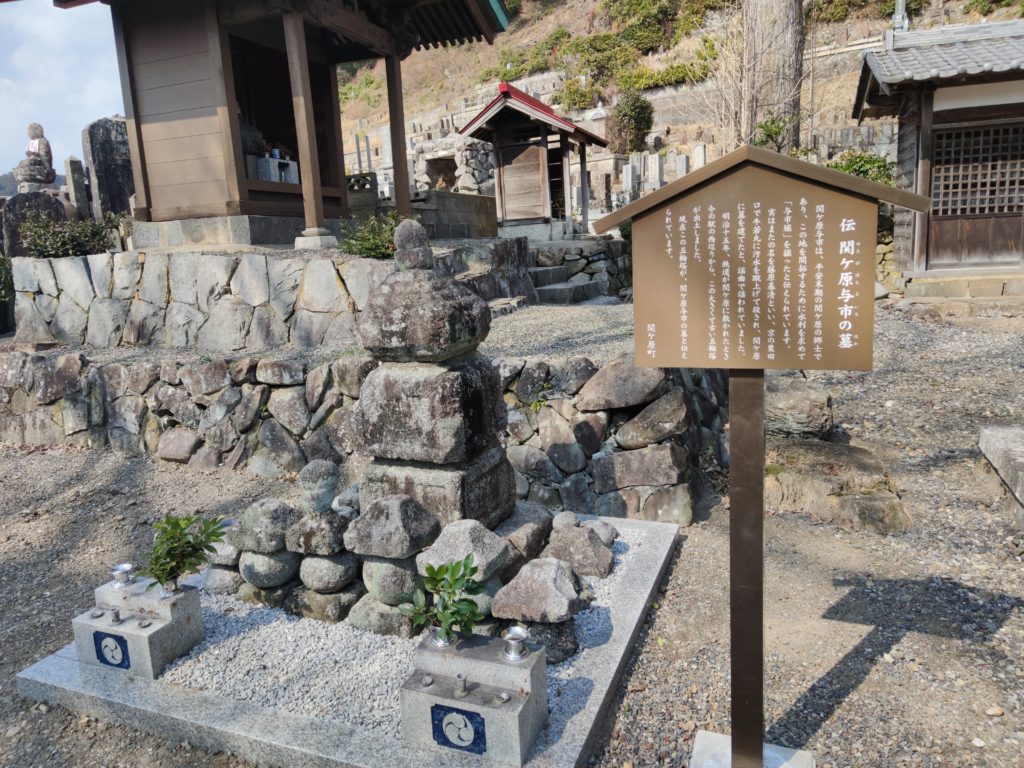
Incidentally, the story goes that Sekigahara Yoichi was cut down and killed by Ushiwakamaru (later Minamoto no Yoshitsune) in Kyoto in 1174. Tour to visit the place where Yoichi was killed.
Imasu Ichirizuka remains immediately after leaving Imasu Inn. There is a magnificent mound, but it is said to have been restored.
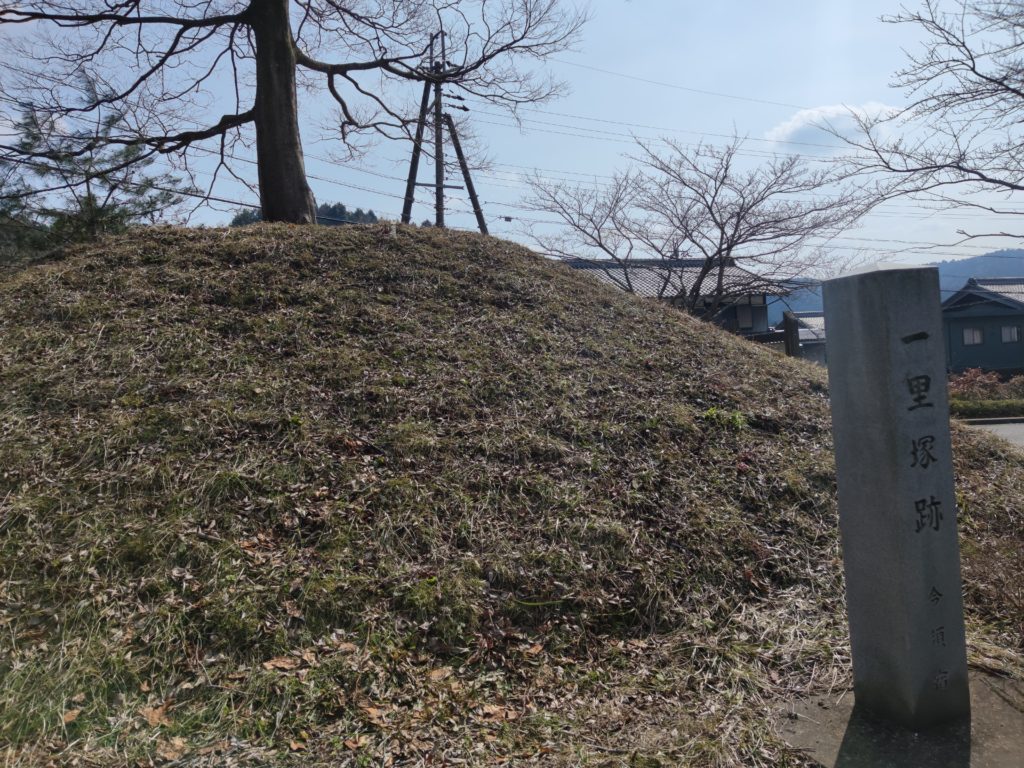
Crossing the national highway and walking along the old road, you will eventually come to Imasu Pass. It is here that Ichijo Kaneyoshi, the Muromachi Period’s Gon Dainagon, left the following words: “It appears to be a solid castle, but if you hit Ichibu Seki, you must say that it is a place where many people are afraid to pass”.

The next site is a historical site related to Tokiwa Gozen. It is said that Minamoto no Yoshitsune, on his way to Kyoto in 1183, passed by this site and laid his hands in front of the grave. The truth of the story is unknown.
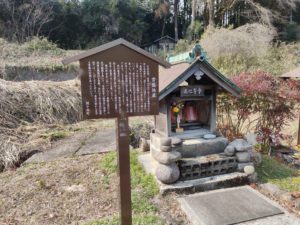
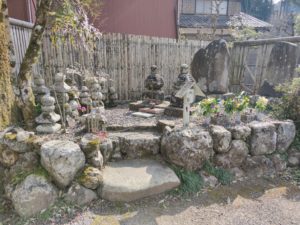
Between the Tokiwa Jizo and the grave of Tokiwa Gozen, there is a stone statue that also serves as a guidepost. It reads “Right Shorenji Road. The map shows that this is indeed a shortcut to Shorenji Temple, located in Hirai on the south side of Matsuo Mountain and famous for its yatsufusa plum trees. The “Kenshin Daishi” refers to Shinran Shonin, and the signpost seems to be based on a legend that Shinran stopped by Shorenji Temple.

The Uguisu waterfall has a drop of about 5 m. This area is between Sekigahara-juku and Imasu-juku, where a resting place was established.
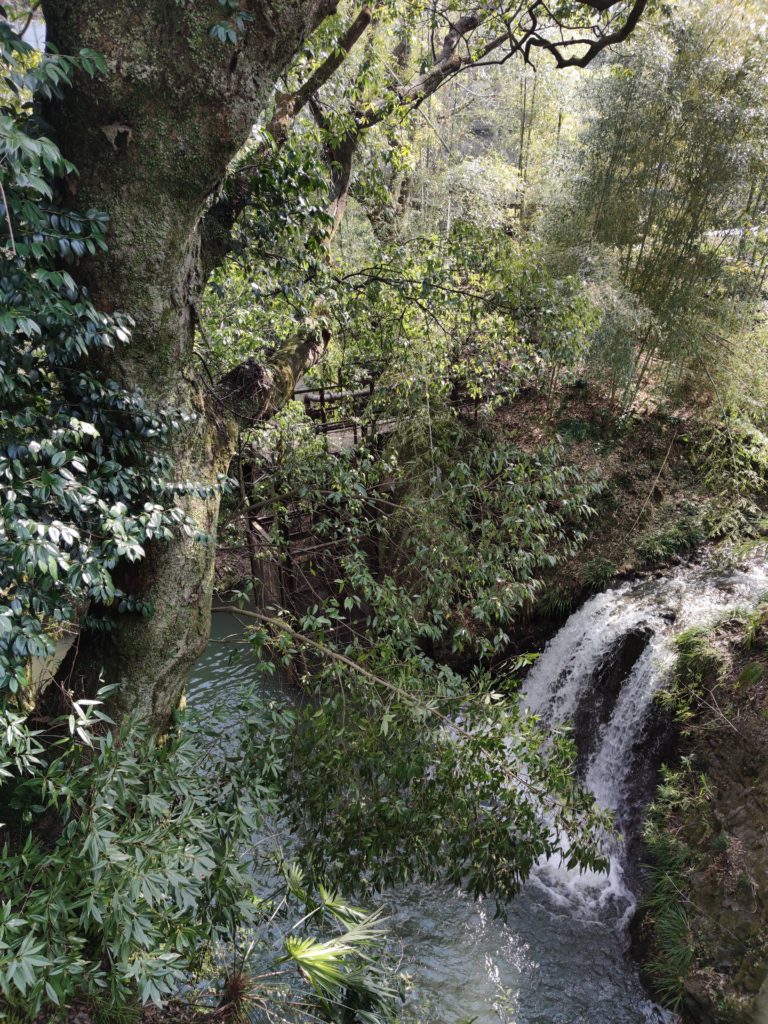
Yamanaka Wakamiya Hachiman Shrine has a railroad crossing in the middle of the approach.
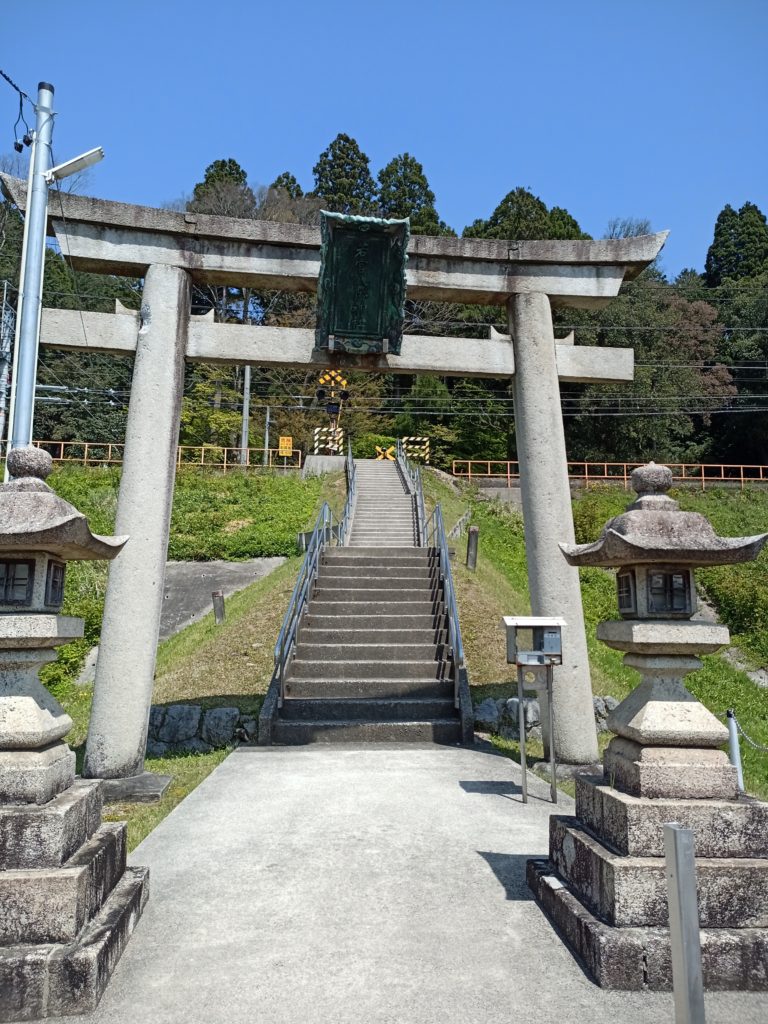
There are a tremendous number of shrines in Japan with the name Wakamiya Hachiman. Usually the Hachiman deity (Emperor Ojin) is enshrined, but the Wakamiya Hachiman shrine here in Yamanaka is dedicated to a different deity than the Fujishita (Toge) shrine in Sekigahara.
During the Jinshin Rebellion, the armies of Prince Oama and Prince Otomo faced off across the nearby Fujikogawa River. The residents of Yamanaka and Fujishita areas, where Wakamiya Hachiman Shrine is located, on the west side of the river where Prince Otomo was located, supported him. As a result of the battle, Otomo’s army lost. It is said that the residents of this area enshrined Prince Otomo at this shrine to mourn his spirit. For this reason, the deity of Wakamiya Hachiman Shrine is Prince Otomo. Inoue Shrine, located on the east side of the Fujikogawa River, enshrines Prince Oama, providing a stark contrast.
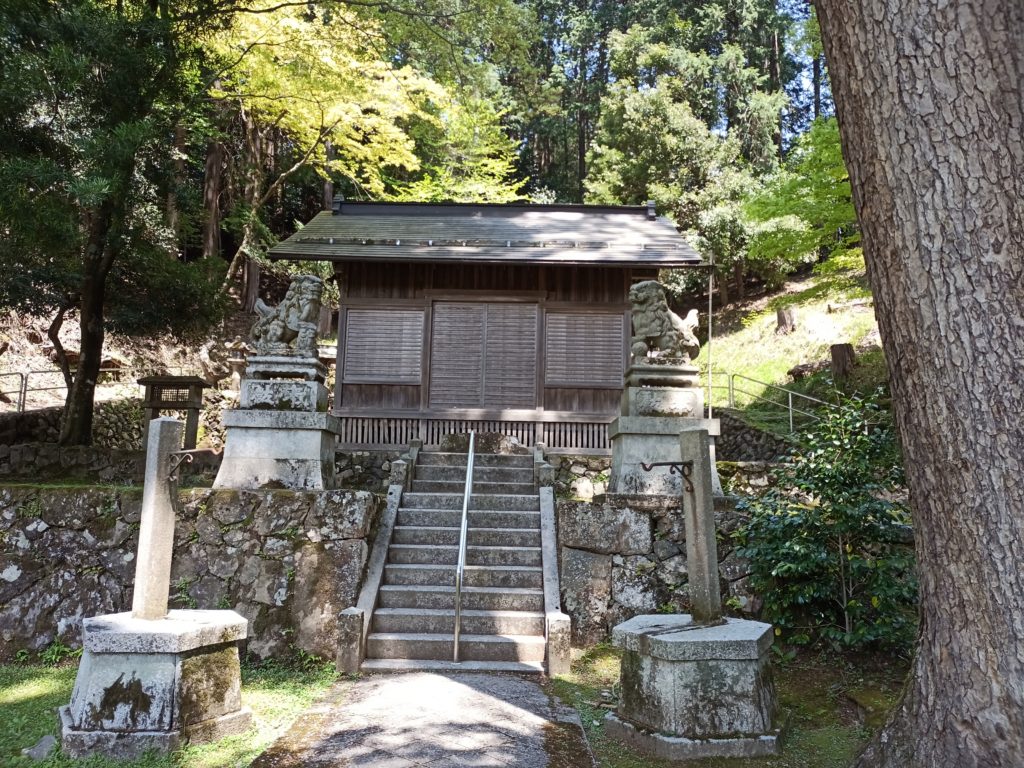
Following the road up the ridge from Wakamiya Hachiman Shrine to the right, you will come to the Matsuo Viewing Point. It is likely that Otani Yoshitsugu, who was suspicious of the movements of Kobayakawa Hideaki, who was encamped on Matsuo Mountain, monitored him from here. Nearby are the remains of Otani Yoshitsugu’s camp. Further ahead is the tomb of Otani Yoshitsugu, so if you have walked this far and still have the strength and energy to climb up the mountain, please do so.
Further ahead is the tomb of Otani Yoshitsugu. This tomb was built by the Todo family of the Eastern Army in the Edo period. The gorinto (five-ring pagoda) on the right is Otani Yoshitsugu’s tomb. And on the left is the tomb of his vassal, Yuasa Gosuke, who is said to have interceded for Otani Yoshitsugu. Why the Todo family? Why the tomb of Gosuke Yuasa?

Returning to the Nakasan Road and proceeding further, you will find a signpost in the grassy area after the Nakasan Road passes under the prefectural road, which reads “Head Mound of Prince Otomo”. Follow the sign and you will see a large three cedars, which is a historical site, “Sanbon-sugi (three cedars) of Jigaimine. The head of Prince Otomo, who was defeated in the Jinshin War, is buried there. The three cedars are a natural monument of the city.

Continuing along the Nakasendo, you will cross the Fujikogawa River (historically known as the Fuji River in Seki). This area is also said to be the place where the two armies stared each other down during the Jinshin War.
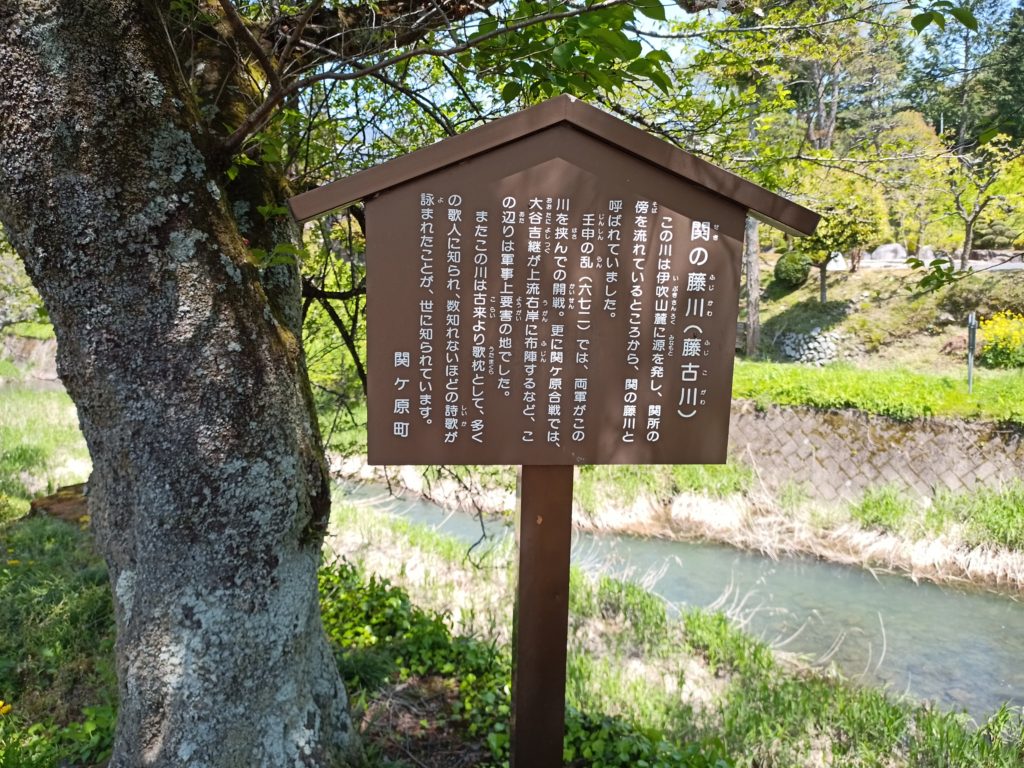
The next historical sites are the ruins of the Jinshin War of 672, which dates back more than 900 years to the Battle of Sekigahara, and the ruins of Fuwa-no-Seki, a short time later, as well as the ruins of the Seki Office and Kabuto-kakeishi (a stone with a helmet over its head).
First, just above the river terrace of the Fujikogawa River is the Fuwa-no-seki site. I had assumed that Fuwa-no-seki had existed for a long time, but it was established in the early 700s when the Jinshin War ended and the Ritsuryo system was established, but it was abolished in 789.
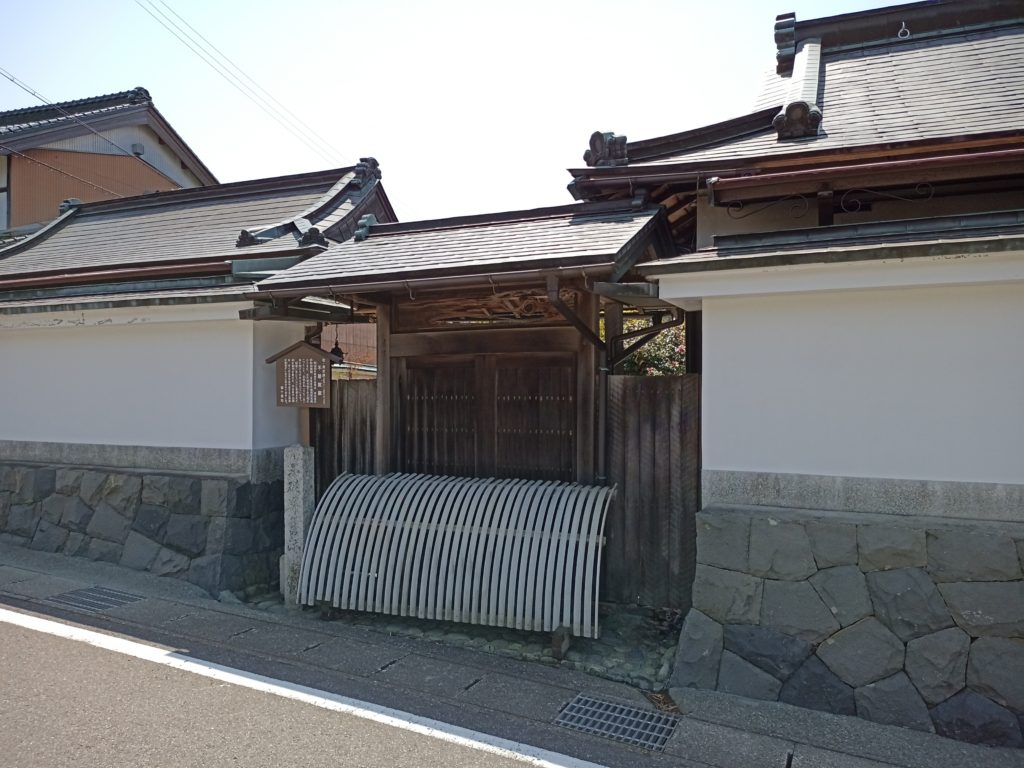
For more information, visit the nearby Fuwaseki Museum.
Immediately ahead, there is a sign pointing to the land of a private house, and following the footprints in the yard of the house, you will find the ruins of Seki-cho and Kabuto-kakeishi (a stone with a helmet hanging from its head). In the photo below, you can see the historic site in a field owned by a private individual. It is said that Prince Oama put his helmet on a stone here during the Jinshin War.

The Kutsunugi-ishi, where Prince Oama took off his shoes, is located in a nearby field. The flat area around here is said to be where the Fuwa-no-seki barrier office once stood.
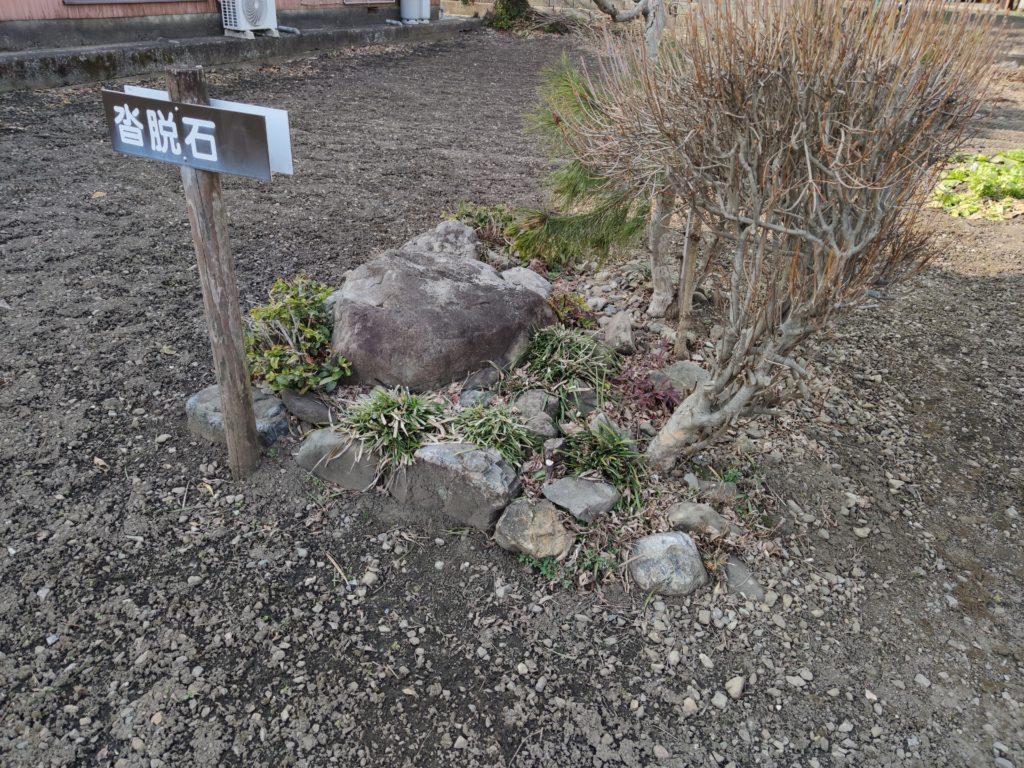
A short distance ahead, on the right, is the Tsukiminomiya Osugi cedar. At Kasuga Shrine, where this old cedar tree is located, is the site of Fukushima Masanori’s camp. Masanori Fukushima is famous for being the first to enter the battlefield in the eastern army. Since all the camps west of this point are occupied by generals of the Western Army, this is probably the front line of the Eastern Army.
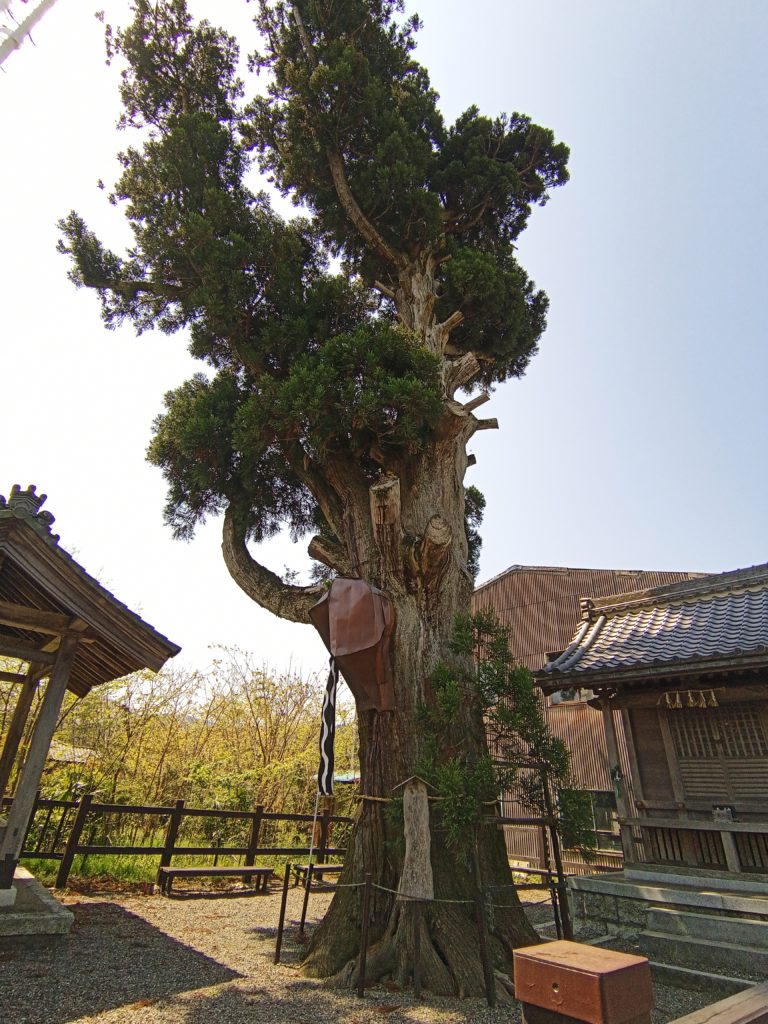
After this, the Kyogoku Takatomo and Todo Takatora camp site of the East Army is located just to the right of the school gate of Sekigahara Junior High School, and can be entered freely.

All that remains is to head for the goal, JR Sekigahara Station. Sekigahara-juku has hardly retained its original form, and there are no historic sites to be seen.
Starting point
This course starts from Kashiwabara Station in Kashiwabara-juku.
Course time
This course begins at JR Kashiwabara Station and takes about 4 hours including the tour. The route is all on paved roads, except for when you turn off the Nakasendo road for the tour.
Lunch
There are only a few restaurants around Kashiwabara Station and Sekigahara Station, and a restaurant in Imasujuku. It is recommended that you bring your own lunch box or have lunch early or late around either station.
Toilet
There are public restrooms within the imasu-juku along the way.
What to bring and wear
You can wear street clothes. Sneakers are recommended.
ideal time for hiking
You can visit all year round, but it is best to avoid the hot summer months and when there is snowfall. Sekigahara is an area of heavy snowfall.
Neighborhood Attractions
Climbing Takekurabe Castle will take 2 hours plus. You may want to take some time to visit the historical sites around Kashiwabarajuku and the Sekigahara area.
Comments
One response to “Kashiwabara-juku – Imasu-juku – Sekigahara-juku hiking”
[…] Check for the tour in Sekigahara […]